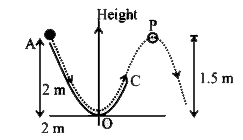The element that shows greater ability to form pπ−pπ multiple bonds is :
Sn
C
Ge
Si
The correct Answer is:A
To determine which element shows a greater ability to form p-π-p-π multiple bonds among the elements of Group 14 (carbon, silicon, germanium, and tin), we can follow these steps:
Step 1: Understand the Concept of p-π-p-π Bonds
p-π-p-π bonds are formed by the sideways overlap of p orbitals. The ability to form these bonds depends on the effective overlap of the p orbitals of the atoms involved.
Hint: Recall that effective overlap is influenced by the size of the orbitals and the distance between the nuclei of the bonding atoms.
Step 2: Analyze the Elements in Group 14
The elements in Group 14 are:
- Carbon (C)
- Silicon (Si)
- Germanium (Ge)
- Tin (Sn)
As we move down the group from carbon to tin, the atomic size increases.
Hint: Consider how atomic size affects orbital overlap.
Step 3: Compare Orbital Sizes
- Carbon has the smallest atomic radius and thus the smallest p orbitals.
- Silicon has a larger atomic radius than carbon.
- Germanium is larger than silicon.
- Tin has the largest atomic radius among these elements.
Hint: Smaller orbitals can overlap more effectively than larger orbitals.
Step 4: Evaluate the Overlapping Ability
Due to the increase in atomic size down the group, the ability of the p orbitals to overlap decreases. This means:
- Carbon, with its smaller size, has the best overlap and can form multiple bonds more effectively.
- Silicon, germanium, and tin have progressively poorer overlapping abilities due to their larger sizes.
Hint: Think about how the size of the orbitals affects the strength and number of bonds that can be formed.
Step 5: Conclusion
Since carbon has the smallest atomic size and the best ability to form effective p-π-p-π bonds, it is the element that shows the greatest ability to form these multiple bonds.
Final Answer: The element that shows greater ability to form p-π-p-π multiple bonds is Carbon (C).
Summary of Steps:
1. Understand p-π-p-π bonds.
2. Identify the elements in Group 14.
3. Compare the sizes of their orbitals.
4. Evaluate the overlapping ability based on size.
5. Conclude that carbon has the greatest ability to form these bonds.
p-π-p-π bonds are formed by the sideways overlap of p orbitals. The ability to form these bonds depends on the effective overlap of the p orbitals of the atoms involved.
The elements in Group 14 are:
- Carbon (C)
- Silicon (Si)
- Germanium (Ge)
- Tin (Sn)
- Carbon has the smallest atomic radius and thus the smallest p orbitals.
- Silicon has a larger atomic radius than carbon.
- Germanium is larger than silicon.
- Tin has the largest atomic radius among these elements.
Due to the increase in atomic size down the group, the ability of the p orbitals to overlap decreases. This means:
- Carbon, with its smaller size, has the best overlap and can form multiple bonds more effectively.
- Silicon, germanium, and tin have progressively poorer overlapping abilities due to their larger sizes.
Since carbon has the smallest atomic size and the best ability to form effective p-π-p-π bonds, it is the element that shows the greatest ability to form these multiple bonds.
1. Understand p-π-p-π bonds.
2. Identify the elements in Group 14.
3. Compare the sizes of their orbitals.
4. Evaluate the overlapping ability based on size.
5. Conclude that carbon has the greatest ability to form these bonds.
Similar Questions
pπ−pπ multiple bond is seen in
View SolutionA particle (m = 3 kg) slides down a frictionless track (AOC) starting from rest at a point A (height 2m). After reaching C, the particle continues to move freely in air as a projectile. When it reaching its highest point P (height 1.5 m) the kinetic energy of the prarticle (in J) is : Figure drawn is schematic and not to scale , take g = 10ms−2
 View Solution
View Solution
Knowledge Check
- Question 1 - Select One
The tendency to form pπ−pπ multiple bonds in group 14 is
most prominent forACBSiCSnDPb - Question 2 - Select One
dπ−pπ bonding exists in
AdiamondBgraphiteCtrisilylamineDnone of these
π bond is formed by
View SolutionThe group 15 element having maximum tendency to form multiple bond is ___ .
View SolutionSelect the correct statement(s) with respect to the pπ−dπ dative bond.
View SolutionWhich of two elements, carbon and silver, form multiple bonds?
View SolutionAssertion:- The heavier P-block elements form storng π− bonds.
Reasons:- The heavier elements of p-block form dπ−pπ or dπ−dπ bonds.View SolutionA : Heavier elements of 14th group do not form pπ−pπ bonds .
R : Atomic orbital of heavier elements are too large and do not have effective overlapping .View Solution

